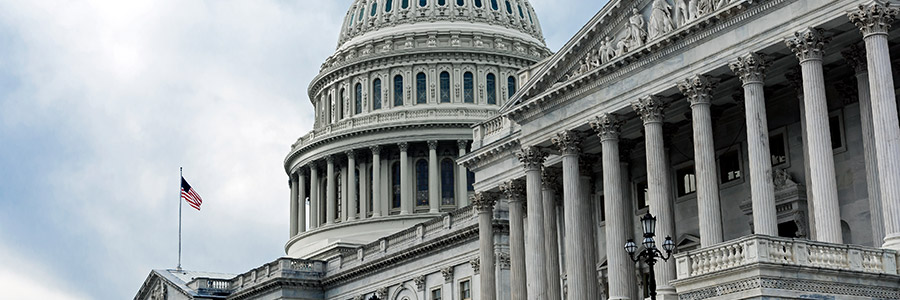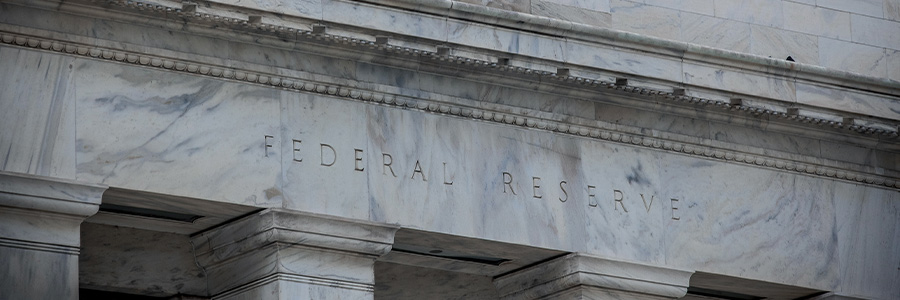September 2023 FOMC: Hawkish for Longer
By: Oscar Muñoz, Gennadiy Goldberg, Molly McGown, Mark McCormick
Sep. 22, 2023 - 6 minutes
The FOMC's policy decision broadly matched market expectations at its September meeting by keeping rates on hold at 5.25%-5.50%. This is the second pause in the cycle since the FOMC began lifting rates in March 2022. As we expected, the main takeaway from Wednesday's meeting was the message of policy remaining “higher for longer”, as the job of bringing inflation back to target is far from over. Indeed, the Fed needs more convincing evidence that inflation is on a clear path to its 2% goal in the face of still solid output growth and despite the positive outcomes on consumer price inflation in recent months.
The Fed's updated dot plot projections suggest that we can't fully rule out the possibility of tighter rates before the end of the year. About 2/3 of the Committee is still leaning toward an additional rate increase, though the dot plot is not a guarantee of policy results. But as Chair Powell noted “you know sufficiently restrictive only when you see it”. That means policy decisions will remain highly data dependent, with particular attention not only to improving inflation outcomes but also to a normalization in the growth backdrop to a level that would be more in sync with the Fed reaching its 2% inflation goal in the medium term.
Given our view for slowing GDP growth in Q4, a shrinking imbalance between labor supply and demand, and still moderate core inflation, we continue to expect the Committee to keep the Fed funds rate unchanged at current levels. Contrary to the Fed, our base case includes a recession starting in Q1 2024, which we expect to accelerate the start of rate cuts. We look for the first easing of policy in March 2024 and a total of 300bp of cuts during 2024.
One More for the Road?
Note that by the November FOMC meeting, barring a long government shutdown, we will get additional CPI data (Sep), a payrolls report (Sep), two PCE reports (Aug/Sep), JOLTS data (Aug), Q3 ECI and GDP growth numbers. Except for Q3 GDP, we expect to see continued moderation in those releases (also note that revisions to GDP/National Accounts will be published on September 28th).
We see the December FOMC as a higher risk for a final policy rate hike given that core CPI inflation is expected to gain some m/m momentum by then. Still, we expect the move from around 0.2% m/m core inflation on average in recent months to closer to 0.3% m/m on average in Q4 not to be overly concerning for Fed officials, unless it is accompanied by an unwelcome strengthening in other macro variables.
In our view, the Fed's more hawkish pivot in the dot plot, now signaling fewer than expected cuts for 2024 perhaps makes the impetus for another rate increase less likely as policy is now set to stay higher for even longer than most market participants expected. Powell's hawkish message at the press conference also has the advantage of keeping financial conditions tight, as the market digests the Committee's even more hawkish forward guidance.
Note that Summary of Economic Projections (SEP) now suggest the Fed will keep policy at a historically restrictive stance through end-2024 if the Committee's forecasts come to fruition. If the Fed does not hike again, it will actually be tightening policy in real terms next year.
Rates Market Implications: Talk is Cheap
The Fed sent a hawkish signal with the summary of economic projections, doubling down on the “higher for longer” theme amid a shift higher in 2024 and 2025 dots as well as the Fed's growth forecasts. Given the extent to which the market had already decreased 2024 rate cut pricing, the drop to just 2 cuts from 4 may be a bit less impactful for the market — especially since the Fed still sees another 5 cuts in 2025 and 4 cuts in 2026. Nevertheless, the curve flattening reaction in the wake of the FOMC decision makes sense as the Fed is signaling its intention to remain on hold at higher rates.
Talk is cheap at this point in the cycle and the Fed's projections are just that — its own projections for the "soft landing" going forward. If the data begins to turn more quickly than expected, the Fed can certainly cut rates earlier and more quickly than expected.
Given the sharp move higher in rates as the market has been pricing in a soft landing and higher for longer rates in recent months, we are shifting our U.S. rates forecasts higher, with the 10y at 3.80% at end-2023 and 2.75% at end-2024. Despite the upward adjustment, we maintain the following assumptions in our forecasts:
- Economic data to begin softening in months ahead: Our forecast assumes a notable Q4 rally in rates given the likelihood of data continuing to soften, spooking markets which appear to be perfectly priced for a soft landing.
- Continuing to pencil in a recession in early-2024: Given the Q1 2024 recession we are currently pricing in, we expect the curve to begin bull steepening sharply in early-2024.
- Below forwards and consensus: Our projections remain well below forwards (especially at the long-end, where forwards remain very flat) and are below market expectations for Q4 10y rates, which are currently at 3.89%.
USD Remains Stuck in a Global Macro Sandwich
The USD has gone through a tug of war through the Fed. On the one hand, the dots and tone were a bit more hawkish than expected. On the other hand, the summary of economic projections reinforced the soft landing narrative. Regardless of the level of rates, a soft landing and the U.S.-led slowdown are both bearish scenarios for the USD in the months ahead.
The rub with placing too much faith in the Fed’s words of the dots is that it is all subject to the data. While we note that USD data has been on a tear (relative to the ROW) the past few months, the USD has also overshot the relative performance. We also note the importance of relative data surprises as leading indicators of the market narrative, which show convergence of the U.S., E.Z. and China recently. Historically, U.S. data surprises also tend to falter in the last stage of the year.
We also note the USD trading weight in our Global FX Overlay Portfolio (MRSI) continues to lose steam. The implied long position has peaked, but equally important, the rate of change has deteriorated since the summer peak. The signal is marginally negative. Additionally, the equity and rates baskets have seen the USD signal ease, while the growth signal has been flat the past month. By extension, we’re wary to chase the USD at these levels and continue to think that well-populated positioning risks a squeeze if U.S. data stumbles or China data rumbles through the last few months of the year.
Subscribing Clients can access full reports including September 2023 FOMC: Hawkish for Longer on the TD Securities Market Alpha Portal












